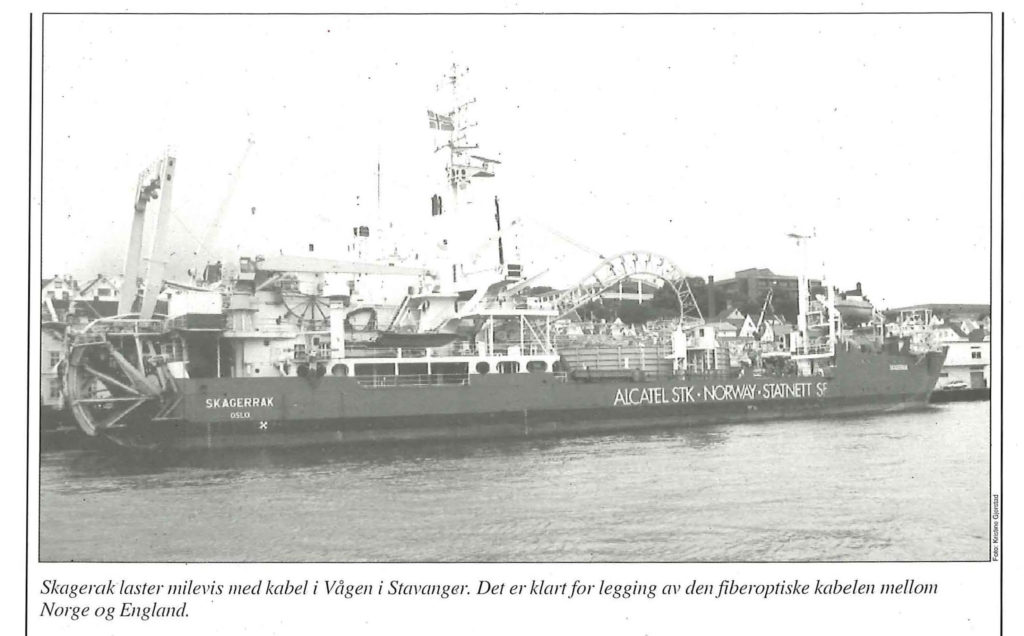Fibreoptic cable arrives

Discussed when planning the Ekofisk II development in 1993, this dramatically raised capacity and speed. It brought the field into a new electronic age, with faster and more stable data communication. Laying a cable to Ekofisk alone was felt to be too expensive, but the new 2/4 J and 2/4 X platforms were configured for possible connection to such a link. Installing a joint fibreoptic network with Amoco and BP, as operators for Valhall and Ula respectively, was also discussed as part of a collaboration project. This was known initially as Co-op and later as the southern fields operating alliance.[REMOVE]Fotnote: AmocoInfo no 21, “Sørfeltenes driftsallianse: Samarbeid gir resultater”, 1997. https://www.nb.no/items/268fb3b9195a46de4f3a048fce3eb09b?page=1
See the article on Southern fields collaboration.
However, a cable was finally realised as part of a wider project for a fibreoptic link between Norway and the UK across the North Sea. Skagerak started laying this connection on 22 July 1998.[REMOVE]Fotnote: EkofiskNytt no 13, “Kabellegging i gang”, 1998. It passed via several Norwegian and British fields, including Ekofisk, Valhall and Ula.
This installation was the first fibreoptic cable between Scandinavia and the UK, and the first commercial telecommunications link to cross wide seas via oil platforms.[REMOVE]Fotnote: Teknisk Ukeblad, “Nye driftsformer”, 17 August 2000.The NorSeaCom-1 cable was owned by EniTel and Telia, and ran from Kårstø in Norway to Lowestoft in Britain. Including the UK in the network offered back-up communication in the event of breaks. Operational from June 1999, this facility later became part of the Tampnet system and was connected to a wider network for communication and data transfer across the North Sea.[REMOVE]Fotnote: Paulsen, Gard, Informasjon over Nordsjøen: Telekommunikasjoner på norsk sokkel, Research report 3/2005. BI Norwegian Business School, Sandvika.
 1999, hisorie, fiberoptisk kabel til ekofisk, forsidebilde, engelsk,
1999, hisorie, fiberoptisk kabel til ekofisk, forsidebilde, engelsk,Fibreoptic cable technology was crucial for developing the operation and control of offshore fields from land.
See the article on 2002: New drilling centre and integrated operations.
Final chapter for old sloggersCessation plan for Ekofisk I
